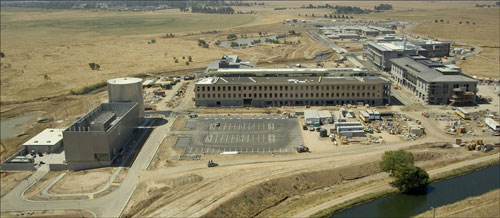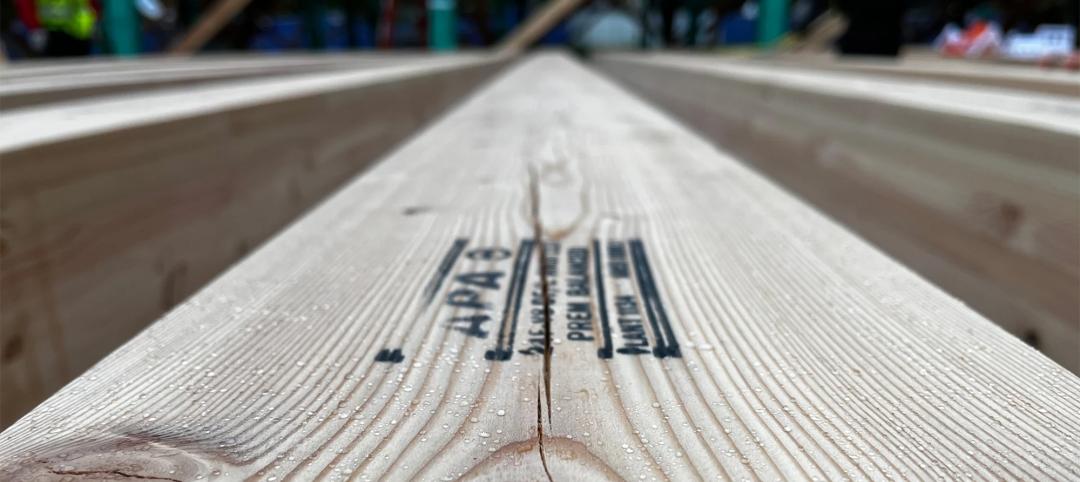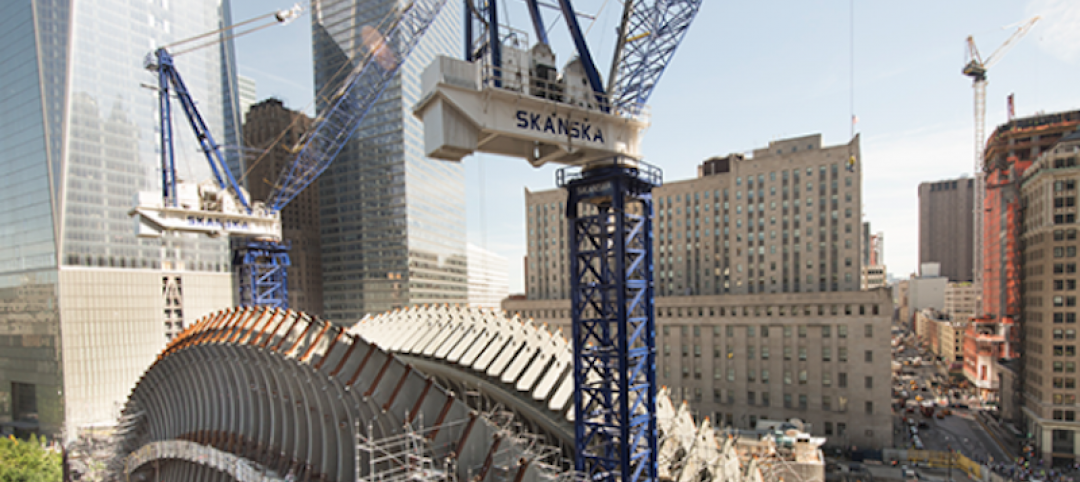The University of California, Merced is the newest campus in that state’s higher education system, and yet already it needs to grow: It has an ambitious plan to double its size over the next six years, with a building program that involves some 1.9 million square feet of academic, housing and research uses.
The size and scale of U.C. Merced’s program is emblematic of what is happening on many college campuses. Fueled by the recent surge in attendance, American universities have been expanding and upgrading their footprints and facilities to meet this demand, be more competitive and adapt to changes in technology and academic focus areas.
But what is different about Merced’s 2020 project is how the school plans to fund the expansion – using a public-private partnership, or P3.This is the largest so-called social infrastructure P3 project in the U.S., with a client-estimated value of about $1.2 billion.
In a P3, public money is leveraged with private investment to fast-track critical projects, for which the long-term responsibility to maintain that infrastructure falls to private partners. These performance-based contracts have proven highly effective and valuable in dozens of countries, including Canada, Chile and the U.K., as well as in the U.S. Here, P3s have typically been used to finance and develop large-scale infrastructure projects such as highways and bridges. For example, Virginia’s Elizabeth River Tunnels and Florida’s I-4 Ultimate are two of the biggest such undertakings. To date, 33 states have approved P3 approaches for transportation infrastructure.

Like our roads and bridges, America’s social infrastructure – public buildings, from schools to hospitals – are also in dire need of investment. Lacking the funds to make the needed improvements, government entities – and even such universities as U.C. Merced – are increasingly considering P3 models for their projects. Social P3s have lagged behind transportation projects because until recently, ample capital and low interest rates made it relatively easy for public bodies to get approval to build, said Larry Casey, Skanska senior vice president. But as that capital flow has become scarce, municipalities, universities and state governments have been forced to look elsewhere to fund these projects.
For social infrastructure projects, the funding model that U.C. Merced and a growing number of other facility owners are using is the concession-availability model. Often used for transportation P3s, this approach has the facility owner contracting with a concessionaire – the contract holder – to develop, design, finance, build, operate and maintain the project. California’s Long Beach Courthouse project is the first U.S. social infrastructure project under a concession-availability model. Beyond U.C. Merced, three other major social infrastructure P3s are currently in development: the LaGuardia Airport Central Terminal Building Replacement in New York City, the Indianapolis Justice Complex and the City of Houston Justice Complex.
Demonstrated success
While U.S. social infrastructure P3s are gaining traction in the U.S., internationally these kinds of P3s have been successfully implemented on a broad range of projects. The largest P3 in Sweden is a university hospital: the New Karolinska Solna, a Skanska project and also one of the largest P3 hospitals in the world. In the U.K., our teams are delivering, maintaining and operating the Barts and the London Hospitals P3. This project has transformed two hospitals, the historic St Bartholomew’s and The Royal London, into state-of-the-art healthcare centers. Also in the U.K., we’ve used P3s to redevelop secondary schools in Essex as part of the U.K. government’s former Building Schools for the Future program. The U.S. can learn from these successes.
“Once completed, New Karolinska Solna will be one of the most sustainable hospitals in the world and the first in Europe to reach LEED Gold certification – this is one of many benefits in using P3s,” said Karl Reichelt, Skanska executive vice president. “This method also ensures high safety performance, minimization of long-term lifecycle costs and a high-quality project that is delivered on time and on budget with little risk to the owner.”
P3 advantages
The benefits are clear for using P3s for public buildings. They allow owners to:
Transfer project risks to the private sector: The private partner takes on the financing risk and risks associated with designing, constructing, maintaining and operating the building. This alternative delivery approach advances projects that would otherwise be stalled due to lack of funding, or that are of a size that would normally require multiple phases to complete. By utilizing P3s, municipalities can more quickly green light projects that might otherwise take years to begin, creating jobs and boosting local businesses in the process.
Minimize lifecycle costs: Eighty- to 90 percent of a building’s cost over its lifetime comes from operations and maintenance. Yet, when facility owners consider social infrastructure projects, too frequently much of the discussion focuses on up-front costs and selecting the lowest bid. P3s are designed, built and maintained in a holistic way that focuses on ensuring a high-performing facility throughout the concession period, and returning the asset in the specified condition at the end of the contract.
“P3 delivery is not privatization but a partnership between public agencies or institutions and private sector businesses,” Casey said. “The approach needs to be thought of as ‘responsible’ asset development and management because the intent of P3 is to instill innovative design and operating methods that create value, such as energy savings and healthier work environments, and facilities that maintain their aesthetic characteristics and optimal performance for 35 or more years.”
Achieve projects on time and on budget, with any overages borne by the private partners: The transfer of project risk and investment means that the private partner is responsible for delivering the project on-time and on-budget regardless of externalities such as weather, construction costs or material availability.
Read more posts at Skanska's Constructive Thinking blog.
More from Author
Skanska | Sep 26, 2024
5 lessons in water mitigation for mass timber projects
Sustainability leaders from Skanska, RDH, and Polygon share five tips for successful water mitigation in mass timber construction.
Skanska | May 6, 2024
The benefits of biophilic design in the built environment
Biophilic design in the built environment supports the health and wellbeing of individuals, as they spend most of their time indoors.
Skanska | Dec 4, 2023
4 key innovations and construction trends across airport design
Here are some of the key trends Skanska is seeing in the aviation sector, from congestion solutions to sustainability.
Skanska | Jun 29, 2023
K-12 school construction: 5 ways strong community relations can lead to success
When constructing a K-12 school, building positive relationships with the community—including students, parents, school staff and residents—is critical to the success of the project. Here are five ways Skanska puts the community first when building K-12 schools in the Pacific Northwest.
Skanska | Mar 14, 2023
Skanska tests robots to keep construction sites clean
What if we could increase consistency and efficiency with housekeeping by automating this process with a robot? Introducing: Spot.
Skanska | Jan 27, 2023
Key takeaways from Autodesk University 2022
Autodesk laid out its long-term vision to drive digital collaboration through cloud-based solutions and emphasized the importance of connecting people, processes and data.
Skanska | Dec 5, 2022
5 ways sustainability professionals can help reduce construction's carbon footprint
Mark Chen, Sustainability Manager at Skanska, has found five specific ways to help the construction industry reduce its carbon footprint.
Skanska | Jul 5, 2022
Tour the new Patricia Reser Center for the Arts in Oregon
This month, the community of Beaverton, Oregon, welcomed a new haven for artistic expression with the opening of Patricia Reser Center for the Arts (The Reser).
Skanska | Jun 22, 2018
What owners should know before choosing the design-build project delivery method
Outside of drawing up a well-written contract, owners often overlook a key attribute that can significantly impact the success of a design-build project, writes Skanska’s Julie Hyson.
Skanska | Dec 7, 2017
Busting the myths: What the “S-word” can mean for construction and development
Sustainability, it’s a trendy term. The problem, however, is that it’s being used in so many different ways that people don’t even know what it means anymore.
















